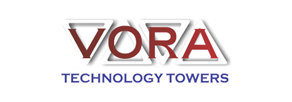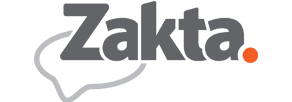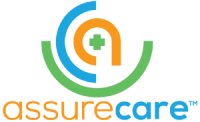
New Taxation Changes That May Upset Tax Payers

Post-July 1, 2019, all would not be the same. The reason for the change is that there are various amendments to taxation thresholds, superannuation, tax rates, penalty rates, minimum wages, childcare subsidies, and lot more.
The recent changes will be affecting individuals, families, workers, business owners, and retired ones alike. Have a read!!
- Childcare subsidy rates
One of the parameters that determine the Child Care Subsidy Amount is the combined annual family income. Post-July 1, the subsidy will be considered based on a family’s combined income along with the following limits:
- < $68,163 – 85%
- $68,163 – $173,163 – reduced to 50%
- $173,163 – $252,453 – reduced to 50%
- $252,453 – $342,453 – reduced to 20%
- $342,453 – $352,453 – reduced to 20%
- > $352,453 – null
To find out the entitled benefits, the taxpayers can use this Child Care Subsidy Estimator.
- Income tax relief for low and middle-income earners
As a part of the Amendment in Federal Budget 2019-20, the government has amended a new set of editions. This will allow the taxpayers which include individuals and families to save some extra money in their pouches.
- The low and middle-income tax offset is raised from a maximum amount of $530 to $1,080 annually while the base amount becomes $255 per annum as compared to $200 per annum.
The taxpayers with a taxable income:
- Of $37,000 or less are eligible to receive a new low and middle-income tax offset of upto $255.
- Of between $37,000 and $48,000 can now receive $255, along with an amount equal to 7.5% to the maximum offset of $1,080.
- More than $48,000 and less than $90,000 are now eligible for the maximum low and middle-income tax offset of $1,080.
- More than $90,000 but not than $126,000 would now be eligible for a low and middle-income tax offset of $1,080, minus an amount equal to three per cent of the excess.
- Family tax benefits for high-income earners
Post 1 July 2019, there will be amendments in the Family Tax Benefit for the individuals falling under high-income earners bracket. The limit is all set to shoot up from $94,316 to $98,988. The families above this tax bracket will see a reduced benefit by 30% for every dollar they earn over $98,988.
- How to Lodge your Tax Return?
Additionally, the ATO has announced some more amendments while managing your tax and super details this financial year seamlessly. Post this update, the taxpayers are not required to receive a payment summary from your employer. This is because ATO is switching to a digital mode of reporting techniques with the help of Single Touch Payroll.
This facility has been extended to the business with less than 20 staff members. According to ATO, this has been the biggest change since GST. As the new system is implemented, it will track the superannuation payments as well so that all the anomalies in the Super payments are easily monitored.
With more and more businesses switching to Single Touch Payroll as compared to last year, almost 9 million employees will be able to report their tax returns with payment summaries with using details available at MyGov online portal.
In case, if they are using the services via tax agents, they will be able to receive this information and can use it to pre-fill tax returns. In addition, the health insurers also are no longer required to send the taxpayers a private health insurance statement as this would also be made available by 20 July.
Post-July 1, 2019, the individuals can only claim deductions for payments they make to their workers, for example, employees or contractors. This means that in these circumstances, the individuals have complied with the pay-as-you-go withholding and reporting obligations for that said payment.
- Write-off threshold increased for small businesses
The smaller business can also claim for business expense deduction costing less than $30,000. The write-off value was $25,000 previously. An increased write-off expense means to have a new asset or any other business entity. Furthermore, the businesses with turnover from $10 million to $50 million can also benefit from this government lift up.
- Minimum wage increase
The overall minimum wages would increase by 3% from the first full-pay period post 1 July 2019. The current weekly minimum wage will see a steep up from $719.20 to $740.78 based on the 38 ordinary hours per week. The decision would affect employees close to 2.2 million or 21 percent of total Australian employees.
- Superannuation changes
Since 1 July 2019, the Protecting Your Super package has devised new regulations to protect members from paying extra fees and insurance premiums. The ‘inactive’ super accounts or the accounts with no contributions for 16 months or greater are liable to lose their default insurance cover post-July 2019.
As per the Association of Superannuation Funds of Australia (ASFA), more than 3 million Australians may be affected by these changes.
- Identification requirements for aviation
From 1 July 2019, the proof of identity requirements for aviation reference number (ARN) applications has been amended. The changes include the removal of 100 point identification requirements for online ARN applications. Instead, applicants will need only one of the following:
- Australian passport
- Australian birth certificate
- Australian citizenship certificate
- ImmiCard
- Foreign passport
As per the Civil Aviation Safety Authority, the applicants who need to use the foreign passport will need to be in Australia while lodging their ARN application unless they are a permanent resident. In other cases, they will need to provide a certified copy of their passport.
- Parting Words
These frequent yet beneficial changes have always been a nightmare for the tax agents wherein they find such taxation services outsourcing providers to outsource their bulk back office support work. This reduces their headache as well as helps their business to expand and grow.









